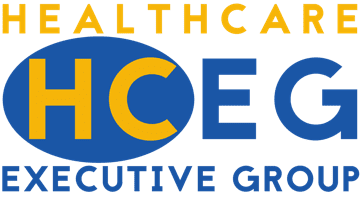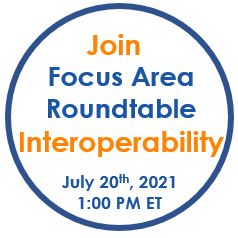-
Ignoring price transparency mandates will not make them go away
-
Will the No Surprises Act be the dagger in the heart of fee-for-service payments?
-
What changes to the No Surprises Act may be coming? And when?
-
Will Advanced EOB’s force payers and providers to collaborate more?
-
How might price transparency impact the workflow of health plans and providers?
-
Will price transparency regulations help patient engagement? Or create a customer service nightmare?
Our second Focus Area Roundtable on Price Transparency – facilitated by HealthSparq – took place on Wednesday, June 16th and members of the HCEG Network and industry thought leaders including Denny Brennan, Executive Director and Chief Executive Officer of HCEG partner Massachusetts Health Data Consortium (MHDC), raised and explored these and other questions.
Ferris Taylor kicked off the roundtable by asking Matt Parker, Vice-President of Products at HealthSparq, to frame the conversation by sharing a highlight of the keynote presentation “Path to Transparency – Increasing Access, Lowering Costs, and Driving Value” that Matt presented along with two other healthcare leaders at the World Health Care Congress Virtual 2021 conference.
Price Transparency – Part of the Foundation for Patient Engagement
Matt Parker related that the Transparency in Coverage Mandate and No Surprises Act presents unique challenges for health plan payers and providers that can only be addressed via increased collaboration. Matt shared that price transparency is just a tool, a component to facilitate payer and provider interaction with their members and patients – not an end in itself but rather something for helping members, patients and providers better understand available provider networks, find care when they need it, engage with the system, and understand what costs are going to be – from both the member, patient, and provider perspective.
Matt suggested this price transparency foundation is the floor on which health plans and providers can build more holistic engagement with their members and patients.
RELATED: Recap of 1st Focus Area Roundtable on Price Transparency
Building Upon the Floor Established by Price Transparency Mandates
To build upon the idea of compliance with transparency mandates as the floor, a health plan participant asked: How do we separate the basic needs of meeting the mandate from the next phase once pricing data is out there? And once basic needs are met, how can we then use that accomplishment to do things to support our members to engage with our providers more effectively? How can we help members with their provider relationship?
These few questions and others raised by participants affiliated with both health plans and provider organizations shaped the discussion and interaction throughout the roundtable.
Primary Topics Discussed by Roundtable Participants
Our Focus Area Roundtables are informal discussions where all participants can contribute insight and raise questions. This post presents a number – but not all – of the contributions made by roundtable participants. Additional content will be shared in future posts, our social channels, and in future roundtables. To receive additional information on this and other Focus Area Roundtables, join our newsletter, follow @hcexecgroup on Twitter, connect with us on LinkedIn, and consider participating in upcoming roundtables.
RELATED: Join our Interoperability roundtable on July 20, 2021 at 10:00 AM PT / 1:00 PM ET
Who’s on First? Low Levels of Initial Compliance Due to Confusion?
One participant referenced a recent study published by JAMA that noted low compliance with the price transparency mandate by hospitals. In response, another participant noted that at his health plan, there was confusion about what is required and who is responsible for compliance with current price transparency mandates. He noted that some staff were not aware of the upcoming January 2022 price transparency deadline for health plans, or thought it was provider-related, not health plan-related.
To be clear, while there are price transparency mandates for both providers and health plans, the JAMA study referenced the hospital-related mandate effective earlier this year on January 1st. Effective dates for price transparency-related mandates for health plans and the specific capabilities required are noted in the following table:
Transparency in Coverage Mandate – Health Plan/Payer
| January 2022 | Public access to pricing data through machine-readable files |
| January 2023 | Personalized, out-of-pocket estimates via online, self-service tools |
| January 2023 | Pricing data available for 500 services |
| January 2023 | Pricing data available for all covered services via online tools or print delivery |
No Surprises Act – Health Plan/Payer
| Cost-sharing price comparison by phone or internet for specific service/item |
| Advance EOB w/ provider and contracted rate for in-network services. Out-of-pocket cost estimate for Out-of-Network services at least 3 days in advance |
| Provider directories updated & verified every 90 days w/ info updated within 2 business days of receipt. Health plan process for organizations not responsive to verification attempts. |
RELATED: Diving into the Details: What You Need to Know About the Machine-Readable Files Mandate
Ideal Outcomes of Payer-Provider Compliance with Price Transparency Mandates
From a health plan perspective, compliance with price transparency mandates should help providers deliver care more effectively – as viewed by the patient. From the provider’s standpoint, a tighter integration with their health plans should enable providers to answer pricing questions from their patients.
If Mandates are Ignored, Will They Go Away – Or At Least Be Delayed?
MHDC’s Denny Brennan shared how some provider and payer organizations are viewing the mandates:
‘Perhaps there’s a bit of willful denial about sharing data partly driven by the fact that pricing information has long been held on the provider side in chargemasters, which are notoriously poorly maintained files with respect to what the patient’s actual exposure will be. Providers and plans are still looking at pricing data as part of their proprietary contracting process and may be essentially ignoring the mandate.’
Denny also offered that the idea of sharing pricing data hasn’t settled in across the industry because health plans are waiting for providers to take the lead and many providers are thinking: “We don’t know how to do that, we don’t know if we want to do that, and if we pretend it’s not happening, it may go away – especially because so many things have been pulled back with COVID-19.”
RELATED: Meeting Transparency Mandates: Put Your Employer Groups at Ease
Delays to No Surprises Act – Likely Clarified by August 2021
Ferris asked HealthSparq’s Matt Parker if he anticipated that the payer-side legislation might get delayed. Matt stated that while the Transparency in Coverage rules are finalized in theory, will take place over the next few years as defined, and will likely not be changed, there are not any sufficiently defined rules pertaining to transparency-related parts of the No Surprises Act – including the Advanced EOB requirements. Matt also shared that updates to the No Surprises Act are likely to be released next month in July.
Listen here for more on potential delays to the No Surprises Act.
Other Mandates Taking Precedence over Transparency?
Participants noted that other regulations, mandates, and rules are taking precedence over – or at least complicating compliance with – the Transparency in Coverage Mandate and No Surprises Act including:
- Interoperability and Patient Access Rule
- Information Blocking Rule
- Preparing for prior authorization experience
- Preparing for expansion of interoperability to include not just USCDI but all EHI (electronic health information.)
An Old Cliché Rings True: Garbage In – Garbage Out
One participant with decades of experience serving health plans noted that 80-90% of medical bills have errors of some type and this means that price transparency and data sharing mandates are starting from a system that is already error-laden. Accuracy needed to automate information interchange does not always exist and we have to clean up our act before we put it on stage.
She echoed questions posed by her clients:
- Where am I going to pull this data from?
- How am I going to get this out of my systems into data files?
- Who are knowledgeable partners that can help with the generation and hosting of machine-readable files?
RELATED: Understanding the Transparency in Coverage Mandate
Health Plans as Definitive Sources of Health Information
On the topic of who’s best positioned to serve the information needs of members and patients, Denny shared that:
“What we’re telling our members is, and this is a tough message for the provider community, is that the route by which patients/members/consumers will be getting their health data is through their health plan. And the regular interchange and exchange of data between health plans and providers is great for providers who need to manage care. But providers are not envisioned in the rules as being the definitive source of patients/member/consumer health information – that’s going to be coming through their health plan.”
Incomplete and Insufficiently Specified Rules Hamper Meaningful Transparency
Healthcare data includes administrative, clinical, and financial data held by both providers and health plans and subject to HIPAA and other federal and state regulations. Denny shared his take on challenges health plans and providers are encountering due to insufficiently detailed regulations and unresolved elements of payer-provider-consumer interoperability for the purposes of value-based care.
Listen here for more on considerations regarding the current state of interoperability rules.
Advanced EOB’s – Forcing Payer-Provider Collaboration & Impacting Workflow Providers?
Providers need to be able to sufficiently integrate with health plans to get a fairly accurate estimate of the cost of specific procedures. Matt shared his take on the Advanced Explanation of Benefits (EOB) portion of the No Surprises Act and suggests it will force payers and providers to create a technology solution in their workflow.
Listen here for more on the impact of Advanced EOB’s.
RELATED: Advance EOB, Patient/Consumer Protections, and Reporting
No Surprises Act – The Dagger in the Heart of Fee-For-Service?
MHDC’s Denny Brennan shared his take on how the movement to more transparency and interoperability mandates may speed the movement to value-based payment arrangements.
“One of the things that I infer from these discussions is that the No Surprises Act is almost a forcing function. As I’ve said to members of our group, if there was ever a dagger, that could be driven into the heart of fee-for-service medicine, it’s the No Surprises Bill. Because in order to prop this thing up and to burden the physician with telling the patient at the point of care that: “Well we want to get you an MRI but if we get it down the street instead of in our own network you’ll save more money.” And physicians hate that. They don’t want to have those conversations. It’s hard enough to get physicians to talk about social determinants of health.”
Listen here for more on the potential impact on fee-for-service payment models.
Impact of Increased Transparency on Customer Service
In response to participants’ discussion about transparency mandates forcing greater adoption of value-based care models, Ferris asked whether there might be a consumer backlash based on missing or inaccurate pricing information and how it might be solved. One participant predicted a customer service nightmare for health plans and providers, and another stated that it’s a problem that is going to be solved by a crowd – not by individual organizations.
Listen here for more on the potential impact of mandate compliance on customer service.
RELATED: Price Transparency Resources for Health Plans
Connect with Others Facing Similar Challenges
Special thanks to Matt Parker and HealthSparq for their role as our Focus Area Partner for Price Transparency. For more information on the meeting and exceeding price transparency mandates and to learn more about topics presented in this post, check out HealthSparq’s website and contact HealthSparq here.
If you’re a leader of a health plan, health system, or hospital/provider organization, consider joining future Focus Area Roundtables on Price Transparency, Interoperability, NextGen/Value Payment Models, and Healthcare Policy & ACA. We have other Focus Areas of the 2021 HCEG Top 10+ under development.









